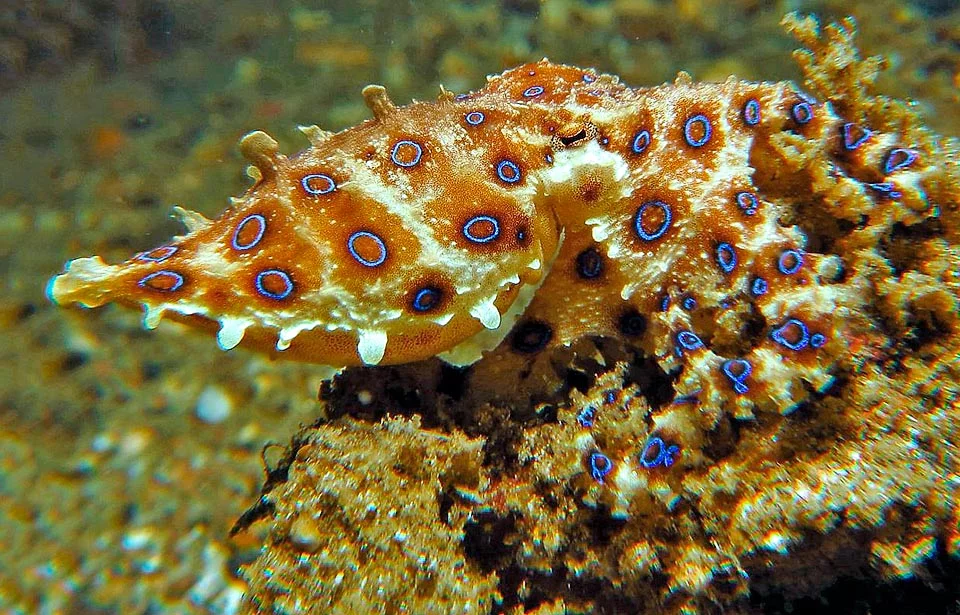A Stunning Surprise in the Shallows
At first glance, the blue-ringed octopus looks like a work of art. Its smooth, yellowish body is decorated with glowing blue rings that seem almost too perfect to be real. Despite its beauty, this sea creature, often no bigger than a golf ball, is far from harmless.
Found in tide pools and shallow coral reefs across Australia and Southeast Asia, it remains mostly hidden from view — until it feels threatened. And when it does, it reveals its true nature as one of the most dangerous animals in the ocean.
Toxic Power: Small Size, Huge Threat
Though tiny, the blue-ringed octopus carries a powerful weapon: tetrodotoxin, a neurotoxin that is about 1,000 times more potent than cyanide. Just one bite can lead to paralysis, respiratory failure, and in some cases, death — and shockingly, there is no known antidote.
Symptoms appear fast: tingling, muscle weakness, and difficulty breathing. In extreme cases, the victim can be fully conscious but unable to move — a terrifying condition known as locked-in syndrome.
This octopus doesn’t attack unless provoked. But if you ever see its blue rings start to flash — that’s your cue to back away.
A Brilliant Predator
Beyond its venom, the blue-ringed octopus is also a highly intelligent hunter. It preys on crabs, shrimp, and small fish, using stealth and speed. It strikes quickly, grabbing its meal with tentacles and delivering a paralyzing bite.
It also uses camouflage as a defense, blending into rocks and sand. But when threatened, its rings glow like neon, serving as both a warning and a defense mechanism — nature’s perfect alarm system.
Ecological Role and Human Impact
Despite its danger, this tiny octopus plays an important part in its ecosystem. It helps control populations of crustaceans and maintains balance in reef environments.
However, rising ocean pollution, coral damage, and habitat loss threaten its survival. Like many marine species, it’s vulnerable to the pressures of a changing environment.
Beauty with a Bite
The blue-ringed octopus is a natural paradox — delicate yet deadly, small but incredibly powerful. It reminds us that in nature, true danger doesn’t always come in large, fearsome packages.
As we continue to explore and enjoy the ocean, let’s do so with curiosity — and caution. Some of the most beautiful things in the sea are also the most dangerous.
